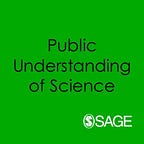The Voice of Science: British Scientists on the Lecture Circuit in Gilded Age America
Review by Gowan Dawson
Lectures are perhaps the least studied aspect of the popularisation of science in the 19th century, a subject that has yielded some excellent scholarship over the last couple of decades. The Voice of Science is certainly the most substantial and impressive account yet published of this vital means by which science was communicated to a variety of audiences.
In the wake of numerous “sadly comical experiences”, Thomas Henry Huxley retained only a “very moderate estimate of the purely intellectual value of lectures”. In fact, he conceded ruefully: “I venture to doubt if more than one in ten of an average audience carries away an accurate notion of what the speaker has been driving at”. This was particularly perturbing as lectures were one of the principal forums in which men of science like Huxley engaged with public audiences.
Nowhere was this more the case than in the United States, where literary writers such as Charles Dickens and Oscar Wilde had long blazed a trail of hugely lucrative speaking tours. As American industry began to boom and science became increasingly central to the nation’s nascent self-identity, British scientists joined this exodus across the Atlantic. But as Huxley found to his cost, audiences in different cities from New York to Nashville could not be relied upon to comprehend or, more worryingly, even give their attention to what he said.
Globally famous for his pellucid prose, Huxley’s verbal performances were often inaudible (“not a sound was heard except a sort of mumbling”, as one attendee reported) and induced their jaded audiences to “buzz, fan, and to leave” before the end. As the rather insipid individual on the lecture platform seemed so different from his dynamic authorial persona in print, it was even “doubted whether he was indeed the great Thomas H. Huxley” at all, according to Diarmid A. Finnegan in this fascinating book.
In scientific lectures, as Finnegan argues, the carefully cultivated personality and moral character of the speaker provided a particular imprimatur for their claims to empirical truth. However, for those struggling to hear at the back of a crowded and broiling auditorium, unsure whether the speaker was actually an imposter, the authenticating power of voice and physical presence was inevitably less potent.
Lectures are perhaps the least studied aspect of the popularisation of science in the 19th century, a subject that has yielded some excellent scholarship over the last couple of decades. The Voice of Science is certainly the most substantial and impressive account yet published of this vital means by which science was communicated to a variety of audiences. After an insightful introduction that places science within the wider context of public speech, the book follows five scientific lecturers who ventured across the Atlantic from the 1870s to the 1890s. These are the physicist John Tyndall, the biologist Huxley, the astronomer Richard Proctor, the naturalist Alfred Russel Wallace, and the evangelical evolutionist Henry Drummond.
Helpfully, each chapter begins with a detailed account of their respective experiences lecturing to domestic audiences in Britain, and so, while its focus is on the distinctive American context, the book also affords a broader account of scientific ‘lecture culture’ in the second half of the 19th century.
A hugely significant feature of this culture on both sides of the Atlantic was the imbrication of speech and print. Lectures were extensively reported in newspapers, with stenographers endeavouring to transcribe every word that was spoken, and often reprinted verbatim from transcripts that were made available beforehand. Huxley, compensating for the volatility of his actual audiences, cultivated friendly relations with particular newspapers, and would visit their offices after his lectures to ensure the shorthand record of what he said was accurate.
For those who had actually heard — or, more pertinently, failed to hear — him, this might be the best means of ascertaining what was said. Lecture series were also subsequently repurposed as money-spinning books and it is hardly surprising that publishing houses like New York’s D. Appleton & Co. were integral in organising and subsidising several of the lecture tours.
Lecturers were able to recoup some of the royalties lost when, in the absence of international copyright agreements, their earlier books had been pirated by entrepreneurial publishers, including Appleton, for the American market. But their motives were not always so mercenary and Tyndall donated the surplus earnings from his hugely successful tour in 1872–73 to create a fund for the support of American students of physics.
One feature of the prevailing ‘lecture culture’ that Finnegan rather underplays are the visual accompaniments, whether printed diagrams, lantern slides or extemporaneous drawings in chalk, that were a vital component of the multi-media experience of so many science lectures. Indeed, one of the first British science lecturers to crack the American market (not mentioned by Finnegan) was the natural history artist Benjamin Waterhouse Hawkins, who in the 1860s and 1870s made his living from profusely illustrated lectures given in various American cities.
Notwithstanding this omission, The Voice of Science makes a very valuable contribution to our understanding of how science was communicated to public audiences both in Gilded Age America and Victorian Britain.
Gowan Dawson is professor of Victorian literature and culture at the University of Leicester, UK. His most recent book is Science Periodicals in Nineteenth-Century Britain: Constructing Scientific Communities (University of Chicago Press, 2020), co-edited with Bernard Lightman, Sally Shuttleworth and Jonathan R. Topham.
